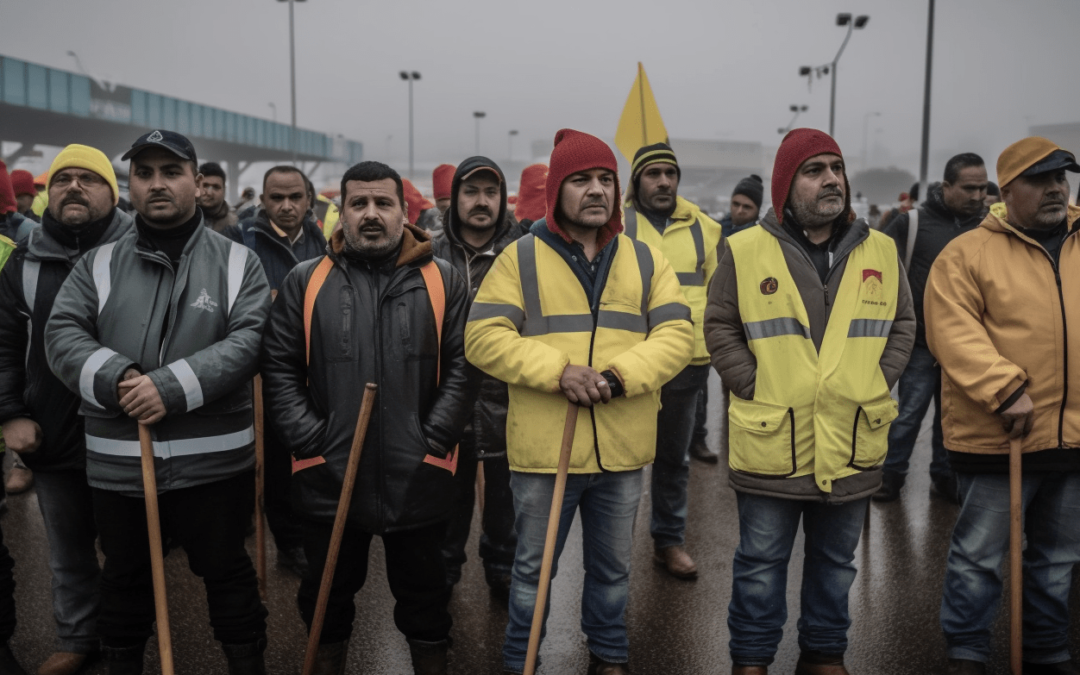There are currently three strikes going on in the United States. We have the auto strike against the big three automakers. We have the writers’ strike. And we also have the actor’s strike. And then we have the whole return to office backlash. Now while the latter is not truly a strike in the traditional sense it is essentially an argument with employers around working conditions. They’re not organized in the traditional strike sense, but there seems to be a new common thread in all of these. Things have changed because of technology, but organizational structures haven’t kept up. And as the saying goes in baseball, three strikes and you’re out.
But first, there is the obvious.
The Usual Suspects
Strikes almost always focus on one thing. Queue Rod Tidwell in Jerry Maguire, “Show me the money”. The amounts and terms vary, but here’s a quick breakdown of the financial aspects:
Writers
The guild is seeking higher compensation for writers across the board. Though there are more jobs available to WGA members than ever before because of the proliferation of streaming services, pay for most writers is down.
The median weekly writer-producer pay is down 23% over the last decade, with inflation factored in. Writers say many of their members aren’t even making a living wage. They are also seeking increases for their pension plan and health fund.
Actors
In terms of pay, actors want an 11% raise to baseline rates this year and an 8% raise over the next two years which reflects what was addressed over the past two years of markedly increased inflation.
Autoworkers
They are looking for a 40% hourly pay increase over four years, cost-of-living adjustments, and the elimination of wage tiers.
Office Workers
While not the core argument in the Return to Office power struggle, workers who have been able to work remotely for the last couple of years have been saving money. Returning to the office brings those costs back, plus a little more thanks to inflation.
I had to get the money issue out of the way because that’s the tip of the iceberg. And if you don’t look past it, you don’t see what else is going on.
The New Common Threads
In case you didn’t get the memo, the world has changed quite a bit in the last three years. Large entities such as governments and corporations are inherently slow to change organizationally. They may implement new technologies, but not always address the people aspects. Eventually, you reach an inflection point and you have a break with the old ways.
Actors
Computer-generated characters have been with us for about 40 years. The first main character in a live-action film was Jar Jar Binks in Star Wars: Episode 1 – The Phantom Menace. Generally, CGI has been an enhancement, but concerns are growing that AI will result in actors being replaced. It was fine for dragons, spaceships, and other things, but replacing real people crosses a line. What’s worse is that people can no longer tell the difference between real and AI.
Studios could make a new John Wayne western today even though he’s been dead for over 40 years. The most likely inappropriate use is going to be AI-generated celebrity porn (or worse, you or your children). Actors want safeguards put in place to prevent their images from being used without their permission.
Writers
Writers have concerns about AI as well. The technology exists to replace writers, composers, as well as actors. Again this falls into the “just because you can, doesn’t mean you should” category. I can generate an entire script or screenplay with AI today. Will that work for some things? Yes, and unfortunately writers are going to have to get used to it. I think studios would eventually concede that human writers are a differentiator, but for now, the issue is being forced with a strike.
Auto workers
The auto worker strike seems more about money, but just below the surface are the concerns about technology and its impact on workers. Industrial robots are getting cheaper. The average cost of an industrial robot in 2010 was about $46,000 and is projected to be around $10,865 in the next 2 years. 3D printing is also a growing trend in the automotive industry. The need for humans is changing. They also want a 4-day workweek, which is a trend that is gaining momentum in many other sectors.
Office Workers
Zoom, Teams, and other tools have been around for a decade. It wasn’t until we couldn’t go into the office that, in most cases, we realized we didn’t need the office anymore. There are still quite a few CEOs who are trying to put the toothpaste back in the tube, but it’s an exercise in futility.
Brave New World
The strikes may fix part of the problem, but there’s still a tendency to address the issues based on historical contexts. I think the changes are broader than that. The old structures no longer make sense, both physical and organizational.
The entertainment industry has been ruled by large entities for the last 100 years. Small entities are likely to be the future of entertainment.
Writers and actors need to develop more of their own personal brand and think more like content creators. Stop thinking CBS, NBC, ABC, MGM, UA, and Time Warner, and start thinking TikTok, Audible, YouTube, Kindle, and Instagram.
There will still be some large studio projects, but there are going to be lots more opportunities for smaller production companies and individuals.
The auto industry has also followed the large entity model for slightly longer than the entertainment industry. A key difference is that it is heavily dependent on a functioning supply chain. During the pandemic, supply chain problems were everywhere. A lot more cars could have been produced in the last 3 years, except computer chips were in short supply. It will be slower to change than the entertainment industry, but look for a more distributed production model in the future.
The transition to electric vehicles will force a lot of retooling. Factories will be smaller and in new locations. Vehicles will largely be 3D printed on site, rather than assembled from sourced materials. Robots will be doing a larger percentage of the work.
Workers will still be needed, but they will be maintaining the printers and robots more than assembling the vehicles.
We may get to a point where you go to your local car dealership and can watch it being printed in the back. I don’t know if that will happen soon, but the possibility exists. That might be taking things too far, but manufacturing in general is going to become more distributed, more automated, and closer to the actual consumers.
Lastly is the modern office building which became obsolete while many CEOs weren’t paying attention. People have found new ways of working. And many have stood up to the Return to Office push, by simply going somewhere else. For those who continue on this path, the result is an organization where the top performers find other opportunities. It’s a race to the bottom. Organizations need to wake up to the change.
Working remotely wasn’t just a temporary accommodation, it was a new way of working. Offices will still exist in the future, but people will interact in different ways. Look for smaller spaces with fewer cubicles and more meeting spaces. More space will be flexible both in use and for how long it is used. The days of the 20-year lease are over. 3–5-year leases will be more common. And more space will be leased as a service rather than just space.
Also, look for more options for interactions. Coworking spaces, retreats, cruises, and other models will be part of how we work.
During the past three years, our world has changed in many ways. We must see the change and reinvent our physical and organizational structures.
In most cases, incremental changes are no longer possible. It’s time to start over from scratch. This can be scary for a lot of people. They want to hold on to what they know. Companies like Allstate, Yelp, and PwC have all taken that leap of faith and are thriving with their new structures.
It’s probably just a coincidence that these three strikes are happening at the same time. But there are lots of interrelated concepts that are all reflected in our changing world at the same time. Maybe there’s something more going on. Or just like in baseball, 3 strikes are just our indicator that it’s time for a change.



